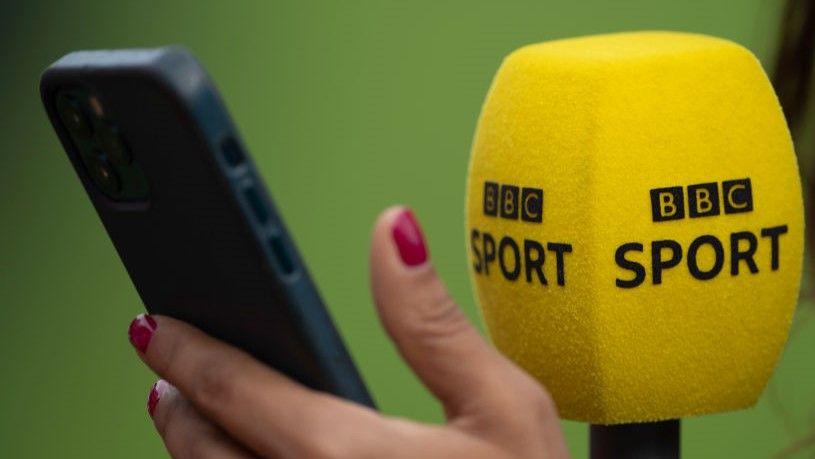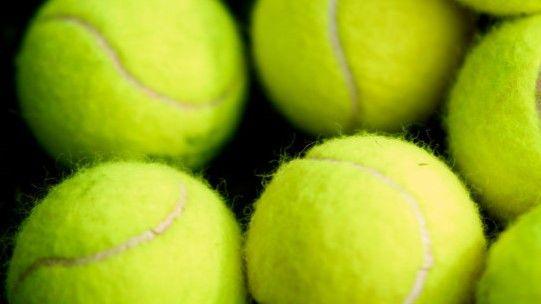Revamped US Open mixed doubles divides opinion

Carlos Alcaraz and Emma Raducanu are set to play together in the US Open mixed doubles
- Published
US Open 2025
Venue: Flushing Meadows, New York Dates: 24 August-7 September
Coverage: Live radio commentaries across 5 Live Sport and BBC Sounds, plus live text commentaries on the BBC Sport website and app
Whether you love it or loathe it, the revamped US Open mixed doubles cannot be ignored.
Transforming the event by enticing the superstars to play with huge cash prizes, a shorter format and new slot before the singles start is a bold move by the United States Tennis Association (USTA).
It has brought excitement and criticism in equal measure, polarising those who play, watch and love the sport.
Some believe it will put more eyes on tennis in an ever-competitive and increasingly saturated market.
"We are always trying to find new initiatives to make our sport more interesting for the fans. I think it is fantastic," Daniela Hantuchova, who won the US Open mixed doubles title in 2005, told BBC Sport.
But others think it devalues a Grand Slam title and robs doubles specialists of a chance to earn the big prize money.
"It's a glorified exhibition in my eyes," said British doubles star Jamie Murray.
What is the new US Open mixed doubles format?
- Published18 August
'Outbursts are like honking a car horn' - inside Medvedev's mind
- Published18 August
Raducanu and Draper face each other in US Open doubles
- Published18 August
Alcaraz 'going to have so much fun' partnering with Raducanu
More eyeballs and entertainment - the argument for change
When the US Open announced it was "reimagining" mixed doubles, the rationale was to "elevate" the event and create "greater focus" on the sport.
Interest certainly grew when the first set of star names were announced.
Five-time Grand Slam singles champion Carlos Alcaraz teaming up with Britain’s Emma Raducanu captured the most attention, while Novak Djokovic, Iga Swiatek and Venus Williams bring further glamour.
"For the excitement levels and for getting the fans to pack the stadium, it is a cool idea to have that star power come out," American doubles legend Mike Bryan told BBC Sport.
"Fans want to see Djokovic, Alcaraz and Sinner even if they are brushing their teeth."
The 16 entrants comprise of eight teams based on their joint rankings, with the other eight given wildcards by US Open organisers.
Twenty-one of the 32 players are ranked in the top 20 in the world in singles.
Matches will be played on Arthur Ashe Stadium and Louis Armstrong Stadium - the two largest show courts at Flushing Meadows.
American television audiences will also be able to watch on primetime on ESPN, who last year signed a £1.5bn deal for exclusive US Open rights up to 2037.
"I think it's cool for the promotion of the game - and I understand the economics of it," added Bryan, who won four of his 22 Grand Slam doubles titles in the mixed.
"There are always going to be people upset - and winners and losers - but in the end I think fans will be pleased with the product."
USTA chief executive Lew Sherr's assertion that "the players are behind" the revamp is certainly true of the top singles stars.
Djokovic understands why there are divided opinions but says he is "excited" to compete in what he thinks will be a "very entertaining" event.
Britain's Jack Draper, who will team up with American Jessica Pegula, says the format will act as useful preparation for the singles, while Swiatek believes it will be a competitive test.
There is, however, a glaring lack of specialist doubles pairings.
Only Sara Errani and Andrea Vavassori, who won last year’s title and both objected publicly to the change, have been given a wildcard.
"I think they should have had a couple more spots for the doubles guys," Bryan added.
Lost opportunities and devaluing a Slam - the argument against
The eagerness of the leading stars to get involved should not come as a surprise.
As well as the shortened format and convenient scheduling, there is also a lucrative prize pot - something that has been particularly galling for the doubles specialists who are missing out.
This year's winning pair will earn $1m (£740,000) - five times more than Errani and Vavassori took home last year.
"It's frustrating. That money is going to players who are making an absolute boatload anyway," Murray, who has won three US Open mixed titles, told BBC Sport.
Appearance fees - which a source told BBC Sport are upwards of $50,000 (£37,000) each - have also been dished out to the stars as sweeteners.
Singles prize money also makes up about 75% of the US Open's record $90m (£66m) purse.
"They aren't playing because it's an opportunity to win a Grand Slam, they're playing because they're getting a truckload of cash and potentially a pretty cool event," Murray added.
Losing a chance for a Grand Slam title is a key source of consternation for the doubles players.
When Murray won his third consecutive US Open mixed title with Bethanie Mattek-Sands in 2019, the pair celebrated by drinking champagne out of their trophy at JFK Airport.
Many doubles players, including Murray, believe the star-studded event could complement the traditional mixed - but not replace it.
"I'm sure it will be an entertaining exhibition - but that's what it will be. I don’t see it as winning a Grand Slam," Britain's Joe Salisbury, who reached the Wimbledon mixed doubles final with Brazil's Luisa Stefani last month, told BBC Sport.
Another gripe is the lack of consultation.
Salisbury and Stefani's understanding is the US Open did not discuss the plans with the players, who are represented by elected Association of Tennis Professionals (ATP) and Women's Tennis Association (WTA) councils.
Pegula, a prominent member of the WTA council, agreed the USTA went "rogue", adding: "If there was feedback about the format, then the [reaction] would be a little different."
"I'm sure there would have been resistance," Stefani said.
"But our views wouldn't have mattered anyway. The decision was made and we have to live with it."
In an already packed calendar, the timing is also tricky with many players competing in warm-up tournaments before having to dash to Flushing Meadows.
On Monday, five-time Grand Slam champion Alcaraz won the Cincinnati Open and said: "The scheduling isn't the best, playing tomorrow. But the concept of the tournament - I love it.
"Probably going to sleep late but I'll try to put my best tennis to help Emma [Raducanu] get the win."
As the start date has drawn closer, withdrawals have also become a concern with Paula Badosa and Tommy Paul pulling out along with Sinner's original partner Emma Navarro.
Sinner and partner Katerina Siniakova withdrew on Tuesday after Sinner retired during the Cincinnati Open final against Alcaraz on Monday because of illness.
The pair were replaced by Danielle Collins and Christian Harrison, as they were the duo with the highest combined singles ranking that signed in by Tuesday morning.
Could other Slams follow suit?
Multiple sources have told BBC Sport they believe the Australian Open, French Open and Wimbledon are committed to the traditional format.
Crucially, they do not have the same financial muscle as the US Open to pay for the prize money and appearance fees.
But if the New York event is a roaring success, then it will not go unnoticed in Melbourne, Paris and London.
All the majors are increasingly aware of the need to maximise earning opportunities in the week before the main draws, whether it is through qualifying, exhibitions or fan events.
Hantuchova suggests the new-look mixed doubles could be introduced at some joint ATP-WTA events.
"I think it would be a great initiative in Indian Wells, Miami or Madrid," she said.
"We have seen the fans are already talking about the US Open and I think it is a great opportunity for the women's players.
"I think it is great we are finding more and more ways to combine men's and women's tennis."
Related topics
- Published16 August

